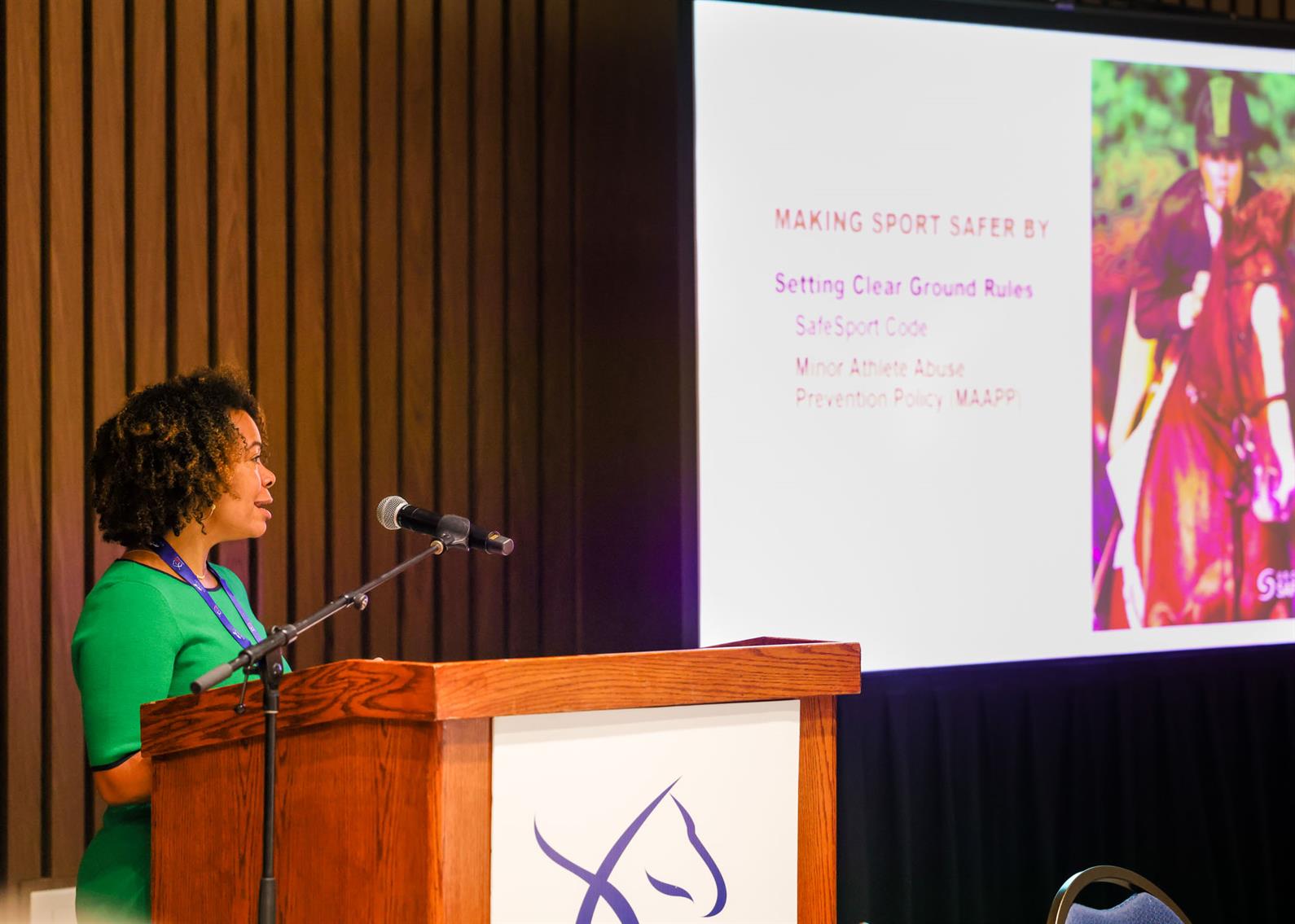Ju’Riese Colón is the Chief Executive Officer of the U.S. Center for SafeSport with a professional background in children’s safety policy and education. She spoke at the USEF Annual Meeting about participant protection and SafeSport in the equestrian community. Here are five takeaways from her presentation.
1. The equestrian community has become a leader in participant protection efforts.
The U.S. Center for SafeSport was designated in 2017 as the nation’s safe sport organization and is tasked with developing training, practices, policies, and procedures to preventing abuse within the Olympic and Paralympic movement. The relationship between the overall equestrian community and the Center has continued to grow as we work towards our joint goal of protecting against abuse in our sport. Colón acknowledged this by stating, “I’ve seen the change in the way that we work with each other and the way that SafeSport has been embraced, and it is truly a sign for me that there’s a lot of cultural change happening.”

2. Education and prevention are important focal points of SafeSport.
Although SafeSport investigations get a lot of attention, the Center is equally focused on efforts to prevent abuse from happening in the first place. They accomplish this through educating participants in sport about the signs of abuse and the conditions that allow it to happen, enacting Minor Athlete Abuse Prevention (“MAAP”) policies, and by ensuring implementation of safeguarding mechanisms at events.
“Our main goal is to help people understand what it looks like to recognize, report, and respond,” said Colón. “Every module, every toolkit that we put out really focuses on educating the sporting community about what to look for and how to prevent [abuse].”
3. Recognizing and preventing emotional abuse is important for participant protection.
The U.S. Center for SafeSport has exclusive jurisdiction over sexual abuse and misconduct cases in sports, but Colón says they often take discretionary jurisdiction over emotional abuse cases as well. The nature of emotional abuse makes it more difficult to discern than physical or sexual misconduct.
“There are a lot of gray areas that we’re trying to better understand, and with the help of people coming forward, we’re able to do that,” said Colón. “Last year we ended the year with about 5,700 reports. About 40% of those had some compelling emotional abuse tied to them, and that is more than we have ever seen in our history. What that tells us is that we’ve got to double down on the work around emotional abuse to make sure [participants] know how to recognize and report it, but also so that we can prevent.”
4. Participant protection works best when everyone is involved.
SafeSport training is required for all USEF Senior Active members, and it’s recommended for athletes, parents of youth athletes, and participants at all levels. The U.S. Center for SafeSport is continuing to produce and improve training materials targeted toward different roles in the sport so that everyone can be part of the solution. The Center provides a variety of training materials, a podcast, and other educational resources to supplement the mandatory training materials and foster a safe environment across the Olympic and Paralympic movement.
Colón says that the Center has recently approved a new course for youth participants in sport that is focused on emotional abuse. Additionally, an app designed for parents of youth athletes will be coming out later in 2023, geared towards helping parents navigate participant protection.
5. Progress is being made in prevention efforts.
“One of the things that I’m most proud of is that of the thousands of reports that we get every year, we’re starting to see more reports of things that haven’t happened yet,” said Colón, explaining that people are calling for guidance when they witness a situation that seems not quite right. “We’re starting to see reports from people who are putting the education that they have received in practice, and we’re getting those reports earlier.”
“Nobody wants to see people abused. Nobody wants to have to make a phone call to the Center for SafeSport,” she said. “The more that we can focus on getting to red-flag behavior before it escalates is what I see as the ultimate goal for the center. We want to put ourselves out of business.”


